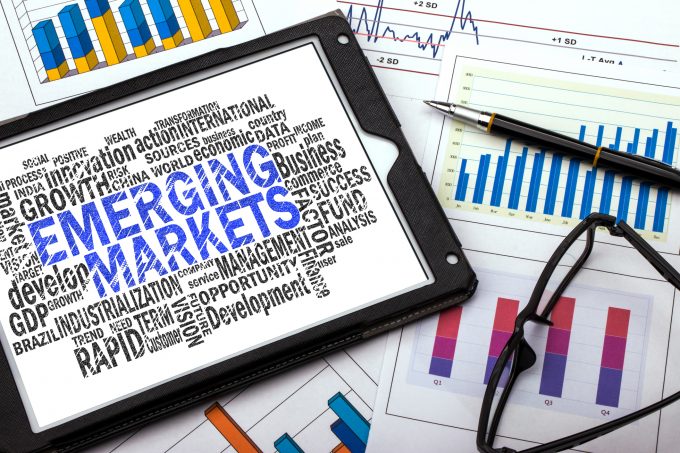Airfreight shift as Taiwan earthquake impacts semiconductor production
The airfreight market could see a temporary shift, owing to changes in semi-conductor production, following ...

India has the greatest potential of all the emerging markets, it was claimed today.
According to Agility’s Emerging Markets Logistics index, published this morning, India rates second to China, but ahead of the UAE, and is been earmarked as the country where companies are most likely to invest.
With economic growth of more than 7% in recent years, it “leapfrogged China to top the Market Size & Growth Attractiveness portion of the index – a shock, given the fact that China’s annual GDP is roughly five times that of India’s”.
Two key examples of its development are the new Goods and Sales Tax, now set for 1 July and Essa Al Saleh, CEO of Agility Integrated Logistics, noted that the ministry of transport had accelerated its road-building programme from 2km a day, to 30km, moving up to 40 km a day.
“A lot of things are going on in India. The GST is a very positive development. India remains strong.”
However, Mr Al-Saleh added a note of caution following India’s November decision to take 500 rupee and 1,000 rupee banknotes out of circulation.
“The intent may be right, but the execution was not as robust as we’d like to have seen,” he said.
Overall, emerging market growth was 4.1% in 2016, marking the first increase in five years.
“That’s pretty good news for us and a sign of incredible strength,” said Mr Al-Saleh, noting that this year’s forecast is 4.6%. But, he added: “We do see a lot of caution”.
Agility and its partner Transport Intelligence surveyed more than 800 supply chain and logistics professionals, and found that although 53% believe the forecast is about right, 43% think it is too optimistic.
Emerging markets averaged growth of 6.6% annually between 2000 and 2007, then reached 7.5% in 2010. Since then growth has slowed in each year to 2015, when it reached 5%.
Unsurprisingly, the greatest threat noted by survey respondents is that to free trade, made more real yesterday when the US pulled out of TPP. But in fact this is not a new threat, noted the research.
“Analysis from Quartz shows that of the 1,855 trade measures G20 governments have introduced since 2009, some 74.5% have been protectionist in nature.”
Another challenge is the slowdown in trade growth, which for the first time in 15 years is expected to be slower than economic growth. Figures from the IMF indicate that 2016 will be the fifth consecutive year with global economic growth below its long-term average of 3.7%, while the WTO says 2017 trade growth could be anywhere between 1.8% and 3.1%.
“Growth in global trade has probably peaked, and that presents huge challenges for emerging markets,” added Mr Al Saleh.
Nevertheless, there were some bright spots. Iran, despite continuing uncertainty over sanctions and regulations, climbed eight places to number 18. And Brazil remains at number seven despite the poor economy, and political and corruption scandals that have engulfed it.
“The outlook for Brazil is brighter than it has been,” said CEO of Transport Intelligence John Manners-Bell. “The feeling is that the worst of it is over, and there should be an uptick in demand for commodities. It’s too important to ignore.”
The index remains relatively sanguine about China, which despite its slowing growth rate, is still growing at more than 6% a year. Some 66% of respondents to the survey said they would not change their plans in China. In addition, China is seeing a number of entrepreneurs keen to capture some of the growing e-commerce market.
“The economic slowdown in China is real and we are seeing it in our China business,” noted Agility. “That said, China is such a huge market that there are still opportunities for everyone, big and small. Its fragmentation is part of its enduring resilience.
“People don’t appreciate what e-commerce is doing to change China. McKinsey says China’s online retail market is the biggest in the world – 80% bigger than that of the United States…E-commerce in China is driving inbound freight volumes in a country that has been an export-first economy for three-plus decades.
“Chinese e-commerce entrepreneurs are looking to tap into the expertise, systems, technologies, and warehousing and distribution networks of established logistics players as they scale up their operations. Not the established e-commerce giants, but the next generation of e-commerce companies for whom logistics has the potential to either be an Achilles’ heel or a major driver of growth and profitability.”
Mr Manners-Bell noted that e-commerce would be a key driver for logistics in emerging markets.
“You can’t undermine the impact of e-commerce. The transport, retail and logistics sector is growing at an incredible growth rate.”
Mr Al-Saleh added: “It’s a major development for the logistics sector. You see easier trade flows and interactions with Customs. It will facilitate the faster growth of trade and business.”
Two of the biggest losers were Africa’s largest economies, South Africa and Nigeria, although East Africa saw some bright spots. Russia was bumped down from number 10 to 13th, while Kazakhstan jumped to number 9.

Russia has faced falling oil and gas prices, alongside sanctions. But, said Mr Al-Saleh: “It is a $1trn economy and quite significant. Sanctions have had an impact and oil and gas has been volatile and uncertain. But in the mid- to long-term it is a significant market that cannot be ignored.”
He appeared to be broadly positive about emerging markets.
“Growth is starting to come from non-trade sources, which is very encouraging. Trade will follow the path of least resistance and emerging markets have become vital to the world’s economy.”

You can download the full report here.
Comment on this article